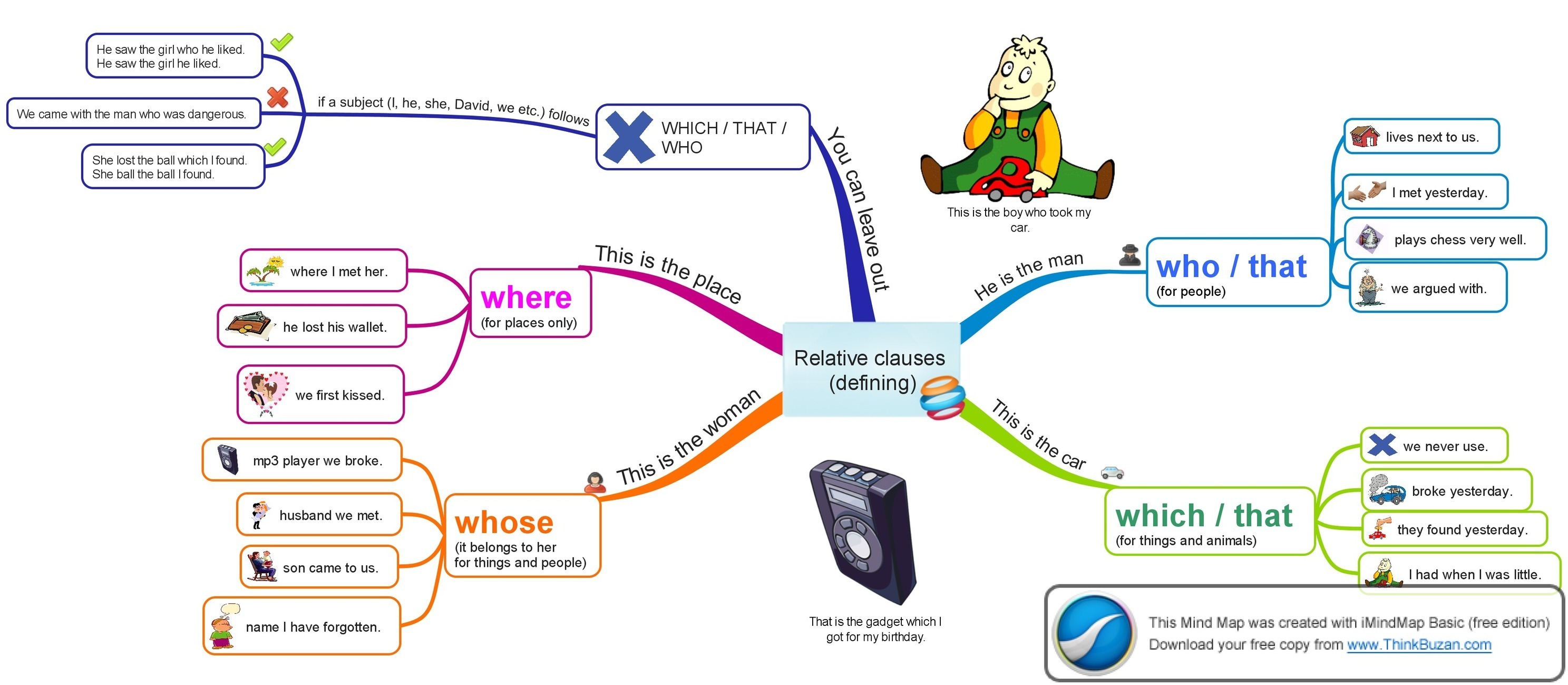Ex: (A) The books which are interesting are best sellers. The interesting books are bestsellers. (Los libros que son interesantes son bestsellers. Los libros interesantes son bestsellers)
Ex: (B) Shakespeare, who was born in Stratford, wrote Hamlet. (Skakespeare, que nació en Stratford, escribió Hamlet)
We use relative clauses to give additional information about something without starting another sentence. By combining sentences with a relative clause, your text becomes more fluent and you can avoid repeating certain words.
The information they give can be necessary or additional and this separates the sentences into two types too:
A.- Defining relative clauses: those which give information absolutely necessary to define the noun and recognize it. Ex: The man who lives next door is a doctor. (El hombre que vive al lado es médico.)
B.- Non-defining relative clauses: those which give information that can be interesting or new but never necessary to define the noun, that’s why we place them between commas. Ex: My sister Mary, who studied law, works in New York. (Mi hermana Mary, que estudió derecho, trabaja en Nueva York).
The relative clause is placed just after the noun it modifies.
Ex: My brother, who works as a doctor, studied in Salamanca. ( non-defining) The boy who lives next door is a doctor ( defining)
Defining and Non-defining
A defining relative clause tells which noun we are talking about:
- I know the woman who lives next door.
(If I don't say 'who lives next door', then we don't know which woman I mean).
A non-defining relative clause gives us extra information about something. We don't need this information to understand the sentence.
- I live in London, which has some fantastic parks.
(Everybody knows where London is, so 'which has some fantastic parks' is extra information).
Click on the image
Click on the image
Click on the image
Perfect English Grammar: What is a relative clause?



No comments:
Post a Comment
Note: only a member of this blog may post a comment.